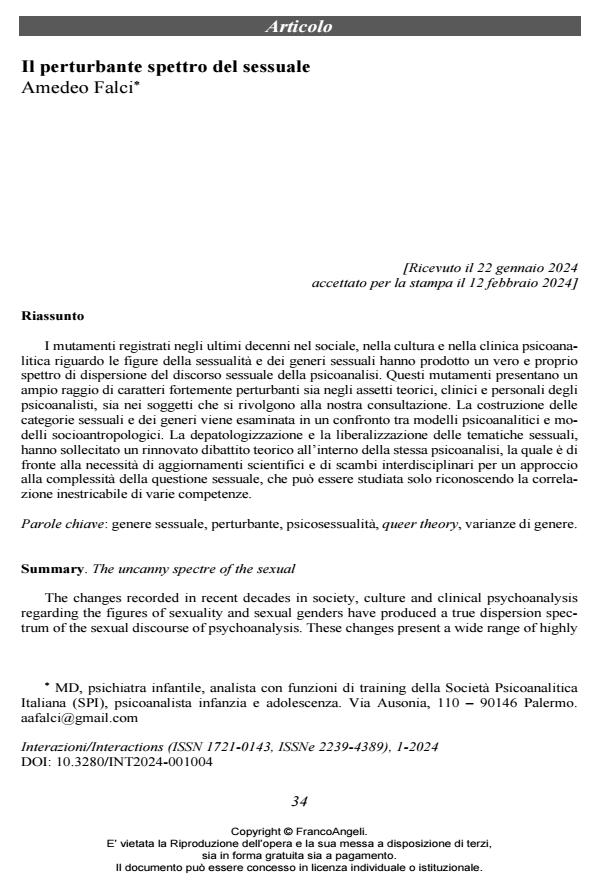The uncanny spectre of the sexual
Journal title INTERAZIONI
Author/s Amedeo Falci
Publishing Year 2024 Issue 2024/1
Language Italian Pages 23 P. 34-56 File size 247 KB
DOI 10.3280/INT2024-001004
DOI is like a bar code for intellectual property: to have more infomation
click here
Below, you can see the article first page
If you want to buy this article in PDF format, you can do it, following the instructions to buy download credits

FrancoAngeli is member of Publishers International Linking Association, Inc (PILA), a not-for-profit association which run the CrossRef service enabling links to and from online scholarly content.
The changes recorded in recent decades in society, culture and clinical psychoanalysis re-garding the figures of sexuality and sexual genders have produced a true dispersion spectrum of the sexual discourse of psychoanalysis. These changes present a wide range of highly un-canny characteristics both in the theoretical, clinical and personal structures of psychoanalysts, and in the subjects who turn to us for consultation. The construction of sexual categories and genders is examined in a comparison between psychoanalytic models and socioanthropologi-cal models. The depathologization and liberalization of sexual issues have prompted a renewed theoretical debate within psychoanalysis itself, which is faced with the need for scientific up-dates and interdisciplinary exchanges for an approach to the complexity of the sexual issue, which can only be studied recognizing the inextricable correlation of various competences.
Keywords: gender variations, psychosexuality, sexual gender, queer theory, uncanny.
Amedeo Falci, Il perturbante spettro del sessuale in "INTERAZIONI" 1/2024, pp 34-56, DOI: 10.3280/INT2024-001004